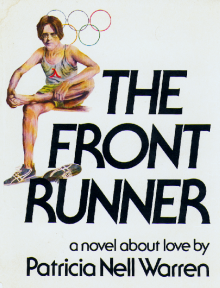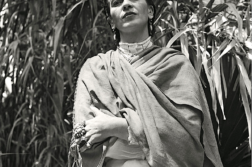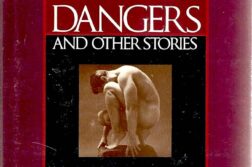WHILE WORKING IN LONDON, I spent a spring vacation in Andalusia, the southernmost region of Spain. I flew to Madrid and rented a car. First stop: Granada. Even before touring the Alhambra Palace and gardens, I visited the homes of two pre-eminent creative geniuses—composer Manual de Falla (1876–1946) and writer Federico Garcia Lorca (1898–1936). As a lesbian writer and classical piano player, I was drawn to these two artists in particular.
Many believe that de Falla was a repressed homosexual. Never married or known to have a lover, de Falla had many queer friends in Spain and Paris, including Lorca. Unlike de Falla, Lorca fully acted on his gay desires, notably in his turbulent relationship with artist Salvador Dalí. Flamenco is deeply embedded in Lorca’s poetry and plays, as well as in de Falla’s music. Listen to de Falla’s “El Amor Brujo” or “Nights in the Gardens of Spain” and hear his vibrant, flamenco-inspired sound.
I was the only visitor at Manual de Falla’s modest house the next morning. On that sunny day, I found the guard asleep by the entrance. It was an unremarkable Spanish house with whitewashed plaster walls, adobe tile roof, and iron railings. I went upstairs to his bedroom. I heard footsteps and turned around. The museum guide, a young man, smiled at me and asked: “Since you’re the only one here, do you want to see his clothes?” Not waiting for my answer, he opened a wooden dresser drawer. Inside were de Falla’s stiff collars and striped shirts, all neatly folded. “He thought he wouldn’t be gone long.” In 1939, de Falla fled the Franco dictatorship, which had crushed Spanish democracy. He didn’t take much with him, as he believed Franco wouldn’t last. But he was to spend the rest of his life in exile, in Argentina.
That night, I was out late at a smoky flamenco cabaret in Granada called a tabloa, sipping a local sherry, steering clear of places where the tourist buses go. With shouts and rhythmic clapping, the audience and performers become one with the drama—the wild improvisation and storytelling of the flamenco art form. Lorca sat in these tabloas, finding his soul in the cante jondo or deep flamenco songs, which sounded like visceral wails, accusations, and pleas. One of my favorite cante jondo poems by Lorca begins like this: “The weeping of the guitar begins./ The goblets of dawn are smashed./ The weeping of the guitar begins./ Useless to silence it./ Impossible to silence it.”
The following day, I drove to the outskirts of Granada, locating the Huerta de San Vicente, Lorca’s family summer home. I looked absently at the period furniture, lace tablecloth, and sentimental details. Nothing about Lorca himself, except old photos, his upright piano with two branched candlesticks, and his bedroom desk, above which hung the original poster for his traveling theater company, with whom he brought the joy of the stage to small villages. I tried to imagine him writing “Blood Wedding” in this room.
As a young student in Madrid, Lorca fell in love with Salvador Dalí (1904-1989), the eccentric surrealist artist. In the early 1920s, they both lived at the university hostel, the Residencia de Estudiantes, along with Luis Buñuel, the future filmmaker. They encouraged each other to pursue their creative endeavors. Dalí later described Lorca as “the poetic phenomenon incarnate” and the only artist who ever made him jealous of their talent. Lorca and Dalí ‘s relationship began as a friendship, but then it became more intimate. Much later, Dalí claimed that they tried to have sex, but it didn’t work, so they didn’t consummate their physical relationship. They spent considerable time together in the late 1920s, and Lorca was a frequent visitor to the Dalí family home in Cadaqués, a small town in Catalonia located on a picturesque bay. Lorca’s efforts to have sex with the artist were useless, as Dalí continued to resist, especially during Lorca’s second stay in Cadaqués.
The passionate phase of their relationship began to fade, but they remained friends, artistic collaborators (working on a play together), and frequent correspondents. Lorca gravitated to Luis Buñuel as his next partner. In 1934, Dalí married Gala, who became his muse. Unlike de Falla, Lorca was not lucky enough to leave Spain when civil war broke out. He was arrested in 1936 on orders of Franco’s fascist authorities in Grenada. The fascists hated that Lorca was queer and a socialist. He was shot on a remote hillside outside of Grenada, and his remains were never found.
Dalí was haunted by memories of Lorca for the rest of his life. In his paintings in the late 1930s and ’40s, Lorca is transfigured into desolate landscapes and twisted figures. He blamed himself for not saving Lorca in 1936. He could have insisted on Lorca going with him to Italy. Dalí talked about him incessantly, and his wife hated his obsession with Lorca.
Only forty letters from Dalí to Lorca have survived, even fewer (seven) from Lorca to Dalí, the rest having been destroyed by Gala out of jealousy. Nevertheless, their limited correspondence reveals a game of seduction. Lorca was giving it his all as he tried to win over the artist as his lover. In the 1980s, Dalí wrote a letter to a newspaper about his relationship with Lorca—“an erotic, tragic love, out of the fact of not being able to share it.” When Gala died in 1982, Dalí regressed mentally to his student days in Madrid, where he first met Lorca and Buñuel. In the end, he refused to eat and became emaciated. One of the nurses who cared for him said that while he was in her care, she only understood one phrase that he uttered: “My friend Lorca.”
Emily L. Quint Freeman is the author of the memoir Failure to Appear: Resistance, Identity and Loss (Blue Beacon Books).





